Last spring, my husband I went to a Bee Club meeting where a guest speaker was to speak all about swarming. Why do bees swarm? How do you know they are going to swarm? What can you do to prevent this? How to recapture a swarm? I remember having a small panic attack at the beginning of the meeting because I started feeling as though swarming was inevitable. Then members of the peanut gallery began sharing these bizarre swarming stories and I really freaked. But then, the speaker showed us a power point of swarms he had recaptured and that seemed manageable. THEN he gave us some tips for preventing swarms, and I my blood pressure returned to normal. Phew, it was never something WE would never have to worry about, as long as we practiced good hive management. Ha. Ha. Ha.
Let’s start at the beginning…
What is a swarm?
A swarm is when the queen decides to leave the hive and boldly go where she’s never gone before. She takes about 60% of the workers with her and ventures out in search of new territory. In total, about 8,000-10,000 bees leave with her (maybe more). Before these bees leave, they gorge themselves and fill their little tummies because they won’t be eating again until they find a new home and get back to business as usual.
Why do bees swarm?
Well, from a beekeeping standpoint, a swarming hive is both good and bad news. It’s bad news because 60% of your hive has decided to bolt, but it’s good news because it means the hive is strong and growing. The short story is, queens give off a pheromone that attracts workers to her. This is how everyone knows what his or her respective job should be in the hive. If the hive gets too large, more and more bees are unable to detect this pheromone. When this happens, their tiny bee brains assume the queen does not exist, so these un-pheremoned bees begin building queen cells in order to re-establish a queen.
Well, word will eventually spread to the real queen that there’s about to be a new queen in town and, since the hive is only big enough for one queen, the old queen will rally the troops and take off in search of a bigger, better home.
So the queen leaves and about 60% of the hive leaves with her. As soon as she lands, they begin to clump around her in order to protect her, but also to be closer to those sweet, sweet pheromones. They usually don’t go far, just to the first place that looks nice to land, and send out scouts. These bees, quite literally, scout around for a new place to live. Generally the bees have 3-5 days to find someplace new before they begin to starve. Because they are in survival mode, swarms are typically very docile. However, they still have stingers, so I’m not sure you’re going to want to go out and give the thing a hug or anything.
One peaceful Saturday morning…
Now that brings us up to speed. One week ago I was pouring a cup of coffee when I looked out the kitchen window at our two main hives. There was a cloud of bees buzzing around the entrance. This is common in the mornings and around dinnertime (we call it “rush hour at the hive”), so I commented to my husband, “The bees are busy this morning.” Then I walked over to the larger picture window in the kitchen and realized this loose cloud of bees extended up into the air above the hive about six feet.
I said, “Um… are we sure they aren’t swarming? That’s a lot of bees.”
My husband stepped out on the back patio and said something like, “Yeah….that’s not normal…”
By the time we threw some shoes on, took one more swig of coffee and stepped outside, the sky in the backyard was a cloud of buzzing. As soon as we stepped out we could hear the bees. They were about six feet about our heads and the cloud stretched about 100 feet from the hives to the closest tree in our backyard. Swarming bees are hard to photograph. You can see a few black dots in the picture below:
In hindsight…
I guess we should have seen this coming. For a week or two leading up to this, we had noticed a lot of activity in the hive:
We also thought they were doing an awful lot of bearding. Bearding is when the bees cluster on the outside of the hive (like in the picture below). They do this when it’s hot out and also when they are thinking about swarming. Bees usually swarm in the spring and, of course it was hot out because it’s June, so we didn’t think anything of it…
Recapturing the Swarm
In about 10 minutes we watched that cloud of bees move slowly across the yard and settle on a branch. Of course, they WOULD choose a branch a million miles in the air, but at least they stayed in their own yard.
My husband began calling around inquiring about the rental of a bucket lift. The cheapest we could find was $120 for four hours (although when the rental guy heard what we were using it for, he stared at us like we were crazy and said, “Just keep it until tomorrow”). We figured we’d pay at least that for a nuc hive and this is a stronger, more established cluster, so we decided to go for it.
When we were at that swarm meeting a year ago, an older gentleman stood up in the crowd and said, “Back in the day we used to just use a vacuum to suck swarms up.” All the young, hipster beekeepers gasped. A vacuum?! What if you damage the bees? Or worse, the queen?!?! Well, here we were, standing under this tree scratching our heads when my husband said, “Maybe I’ll use the ShopVac.”
So he went into the garage and rattled around for a half hour or so and came out with a ShopVac that will gently suck the bees up then deposit them into a bee box!
In the end… it worked! He vacuumed them into the box pictured below and then installed them into a new hive in our back field.


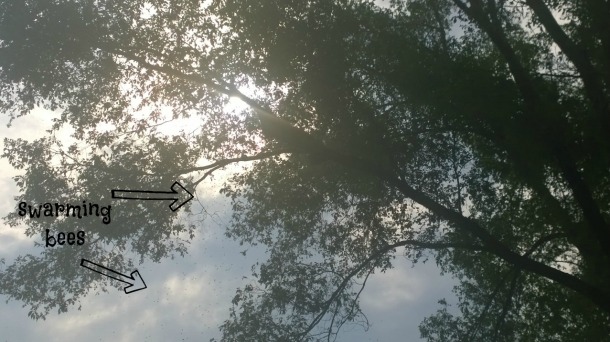
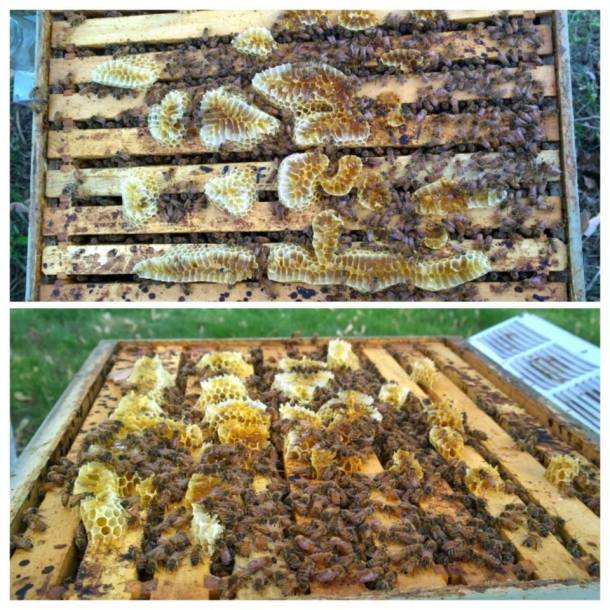
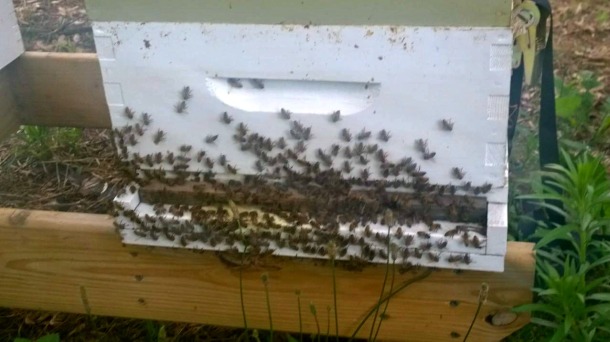
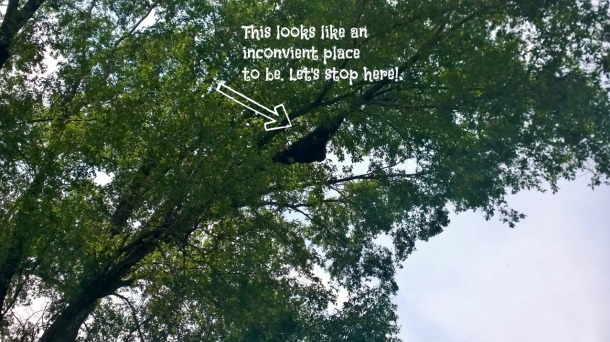



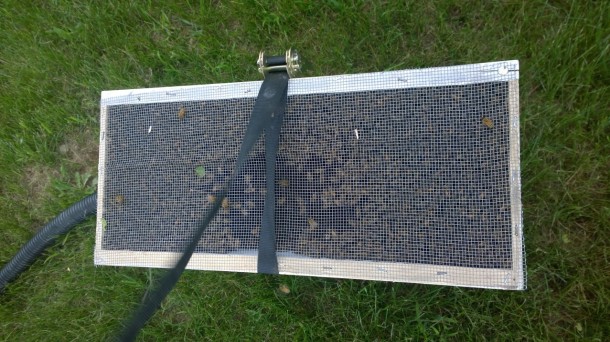
Pingback: Where’s the Honey? |
Reblogged this on and commented:
July 6, 2014